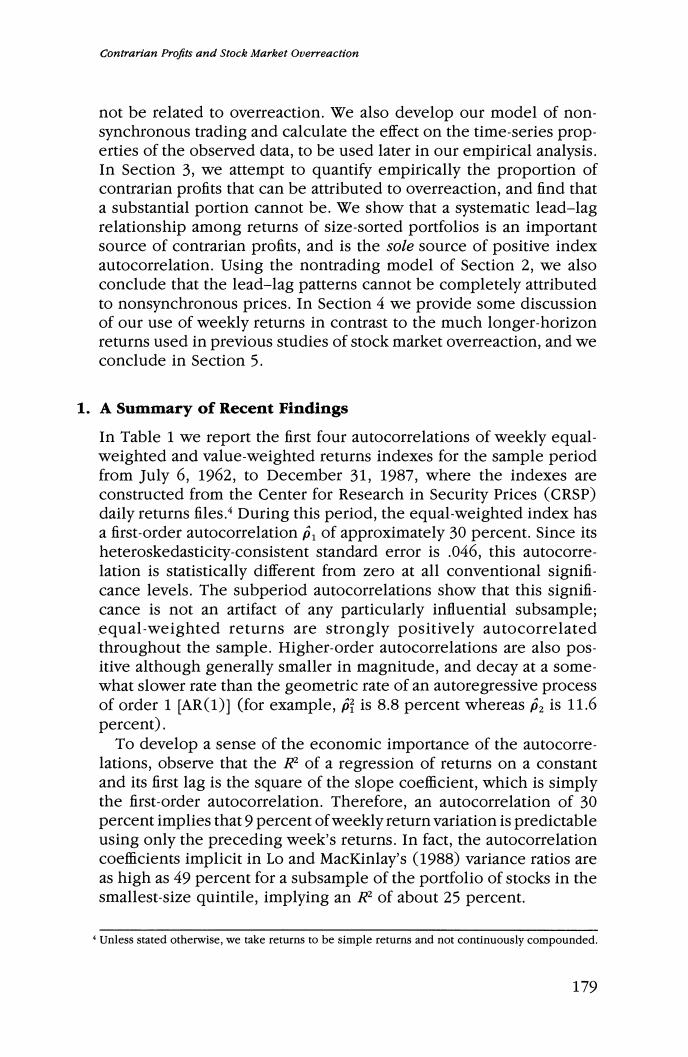正在加载图片...

Contrarian Profits and Stock Market Overreaction not be related to overreaction.We also develop our model of non- synchronous trading and calculate the effect on the time-series prop- erties of the observed data,to be used later in our empirical analysis. In Section 3,we attempt to quantify empirically the proportion of contrarian profits that can be attributed to overreaction,and find that a substantial portion cannot be.We show that a systematic lead-lag relationship among returns of size-sorted portfolios is an important source of contrarian profits,and is the sole source of positive index autocorrelation.Using the nontrading model of Section 2,we also conclude that the lead-lag patterns cannot be completely attributed to nonsynchronous prices.In Section 4 we provide some discussion of our use of weekly returns in contrast to the much longer-horizon returns used in previous studies of stock market overreaction,and we conclude in Section 5. 1.A Summary of Recent Findings In Table 1 we report the first four autocorrelations of weekly equal- weighted and value-weighted returns indexes for the sample period from July 6,1962,to December 31,1987,where the indexes are constructed from the Center for Research in Security Prices (CRSP) daily returns files.During this period,the equal-weighted index has a first-order autocorrelation p,of approximately 30 percent.Since its heteroskedasticity-consistent standard error is .046,this autocorre- lation is statistically different from zero at all conventional signifi- cance levels.The subperiod autocorrelations show that this signifi- cance is not an artifact of any particularly influential subsample; equal-weighted returns are strongly positively autocorrelated throughout the sample.Higher-order autocorrelations are also pos- itive although generally smaller in magnitude,and decay at a some what slower rate than the geometric rate of an autoregressive process of order 1 [AR(1)](for example,p is 8.8 percent whereas p2 is 11.6 percent). To develop a sense of the economic importance of the autocorre- lations,observe that the R2 of a regression of returns on a constant and its first lag is the square of the slope coefficient,which is simply the first-order autocorrelation.Therefore,an autocorrelation of 30 percent implies that 9 percent of weekly return variation is predictable using only the preceding week's returns.In fact,the autocorrelation coefficients implicit in Lo and MacKinlay's (1988)variance ratios are as high as 49 percent for a subsample of the portfolio of stocks in the smallest-size quintile,implying an R2 of about 25 percent. Unless stated otherwise,we take returns to be simple returns and not continuously compounded. 179